With yesterday’s launch of the iPhone on Verizon’s network, ending the three-and-a-half year exclusivity deal Apple had with AT&T here in the U.S., there is a lot to get excited about. AT&T users who suffered from poor coverage and dropped calls – basically, phones which really couldn’t even be used as phones – now have another option.
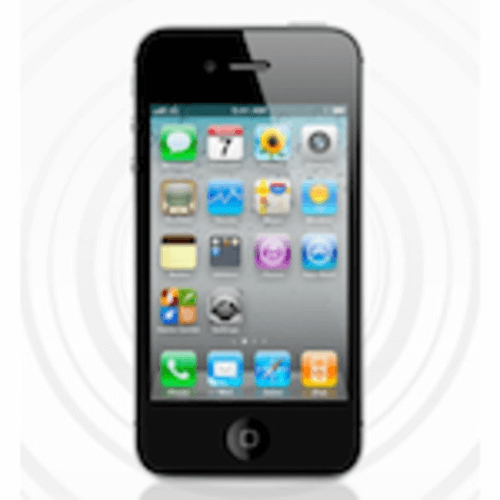
But there are questions, too. What is the difference between the carriers’ networks? Has the antenna issue been fixed? Is there a charge for the new Wi-Fi hotspot feature? Will the iPhone come with preinstalled Verizon apps? And, of course: can I get it in white?
We’ll attempt to answer some of those questions here.
1. What’s the Difference between the Verizon Network and AT&T?
The Verizon iPhone has CDMA chips inside which allow it to run on the Verizon network, while the AT&T iPhone runs on a standard called UMTS. Theoretically speaking, AT&T’s network is capable of faster speeds, but to the end user, there won’t be a major difference in speed when switching between the two because the network gridlock that (regularly) occurs on AT&T causes slowdowns. In fact, the Verizon iPhone may actually feel faster.
Although the new phones have not been released yet, CNET was able to do some brief comparison tests and found the Verizon iPhone loaded webpages much faster than AT&T’s version. If you’re in an area where there’s poor coverage or on a congested network, switching to Verizon could solve those issues.
2. Why Can’t I Talk and Surf the Web/Use Apps?
The one drawback to Verizon’s CDMA technology is that it limits you to using only voice or data in a single session. The AT&T iPhone lets you talk and the surf the Web at the same time, however. This also means that you couldn’t load up any Web-connected mobile applications during a phone call, like Maps, for instance, and have them work. It’s a minor inconvenience, to be sure, but if this is your only concern, you shouldn’t consider it a deal-breaker. (Besides, who really talks on the phone anymore anyway? Don’t you just text?)
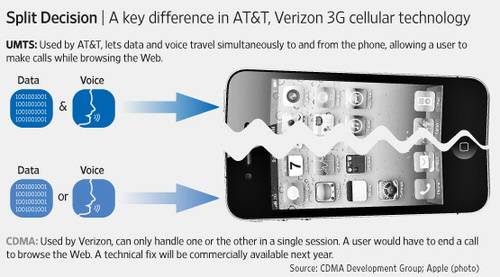
Photo credit: Wall St. Journal
3. Has the Antenna Issue Been Fixed?
Those of you with slightly longer memories, may recall a little (OK, major) PR debacle last year dubbed “Antennagate.” In short, it appeared that Apple’s decision to place its radio antennas as metal bands that wrap around the iPhone’s body led to there being a particular spot on the phone where pressing on the antenna could diminish the signal strength. Unfortunately, it’s near impossible to hold a phone comfortably in your hand without touching the trouble spot. Apple eventually held a press conference, admitted there were mistakes and gave out free plastic bumpers to iPhone 4 owners, which effectively solves the problem. (Bumpers were provided for a limited time only – now you must purchase them.)
With the new Verizon iPhone’s debut, people are wondering if it will have the same problem – will you have to buy a case along with the phone? Although, again, it’s too early for thorough tests to have been completed, early reports indicate the death grip is no more.
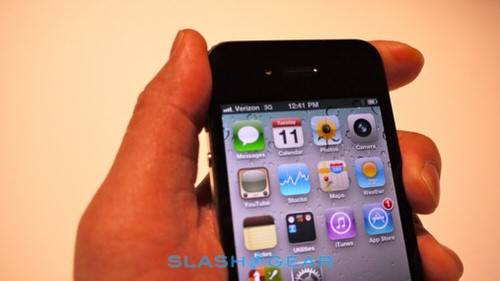
Photo Credit: Slashgear
4. Is Verizon the Exclusive CDMA Carrier?
If you’re hoping that the CDMA iPhone, now that it exists, will make its way to other CDMA networks, you may be in luck. Verizon says it and Apple have a multi-year, but non-exclusive contract. That leaves the door open for Apple to offer the phone to other CDMA carriers in the future, like Sprint, for example. Nothing has been officially announced regarding Apple’s future plans.
5. Why is There No SIM Card?
Another minor point of differentiation between the Verizon and AT&T iPhone is the Verizon iPhone’s lack of a SIM card slot. This has to do with Verizon’s implementation of CDMA technology, which does not require the use of a SIM card. For the end user, a SIM card makes switching between handsets easier, which is of most concern to world travelers who regularly pop out their SIM card and replace it with a prepaid SIM from a local carrier. However, the AT&T iPhone was carrier-locked anyway, making this trick inaccessible to the end user – unless they hacked their phone using jailbreaking software and then unlocked it. Again, this is not a deal-breaker for most mainstream users.
?6. Why Did the Buttons Move? (Do I Have to Buy a Special Case?)
Besides having to support CDMA, the Verizon iPhone’s antenna has a notch above the volume and mute controls on the left side of the phone. In fact, on the Verizon iPhone the controls have been moved down just a bit, but far enough that it will require a Verizon iPhone-specific case or bumper. The old ones for AT&T iPhones will not work. Apple said these changes were made to accommodate the CDMA chips inside the phone.
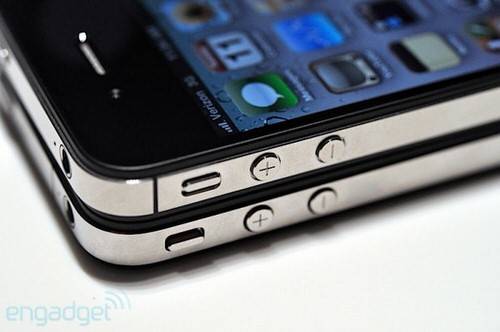
Photo credit: Engadget
7. Is There a Charge for the New Personal Wi-Fi Hotspot Feature?
The Verizon iPhone does one-up the AT&T version by introducing a Wi-Fi hotspot feature, which allows up to five additional devices to share the phone’s 3G connection. Officially, Apple PR would not say whether there was a charge for this feature, but reports have indicated that it will cost $20/month – the same as Verizon charges for the feature on other devices. We spoke to a local PR rep for Verizon Wireless who confirmed the $20 fee would be in place.
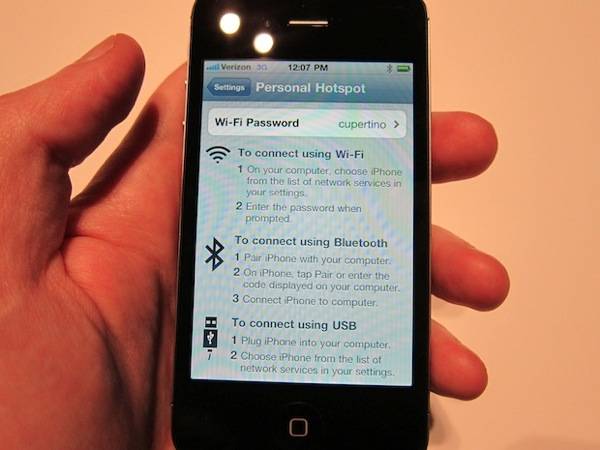
Photo credit: Techcrunch
8. Is Verizon Preloading the iPhone with Apps?
Many of Verizon’s smartphones come preloaded with Verizon’s own mobile applications – will the iPhone suffer the same fate? Will Verizon “crapware” be installed? Thankfully, no. According to Ars Technica, Apple’s VP of Worldwide Product Marketing Phil Schiller said: “we want the experience to be the same for every iPhone user. So there are no special Verizon Apps preinstalled.”
9. Can You Get it in White?
Although the mythical white iPhone briefly showed up on Verizon’s website, it disappeared just as quickly. Its appearance was more likely an error than an indication that Verizon would be offering the device in the alternative color. Our local PR rep said that no one in the field has seen or heard anything about the Verizon iPhone in white either.

Photo credit: Macstories.net
10. How Much Does It Cost?
Last, but far from least, is price. The actual cost of the phone itself (with contract) is the same on Verizon as on AT&T – $199 for the 16 GB version, or $299 for the 32 GB one. The differences come in the data plan pricing. Verizon has not officially announced iPhone plan pricing, but it’s assumed it will be in line with its other smartphone pricing plans. In addition, prior to the Verizon iPhone’s launch, The Wall St. Journal reported that Verizon would offer an unlimited data plan for iPhone users.
Assuming the data plans Verizon currently offers are the ones it will provide to iPhone users, there are some differences from AT&T. At present, AT&T’s plans provide 200 MB of data for $15/month, 2 GB of data for $25/month and 2G of data plus tethering (via USB, Bluetooth) for $45/month. Verizon’s current smartphone plan offers 150 MB of data for $15/month and unlimited data for $29.99/month. The Wi-Fi hotspot would be an additional $20.00.
For more frequently asked questions about this phone, check out Verizon’s own FAQ here.









